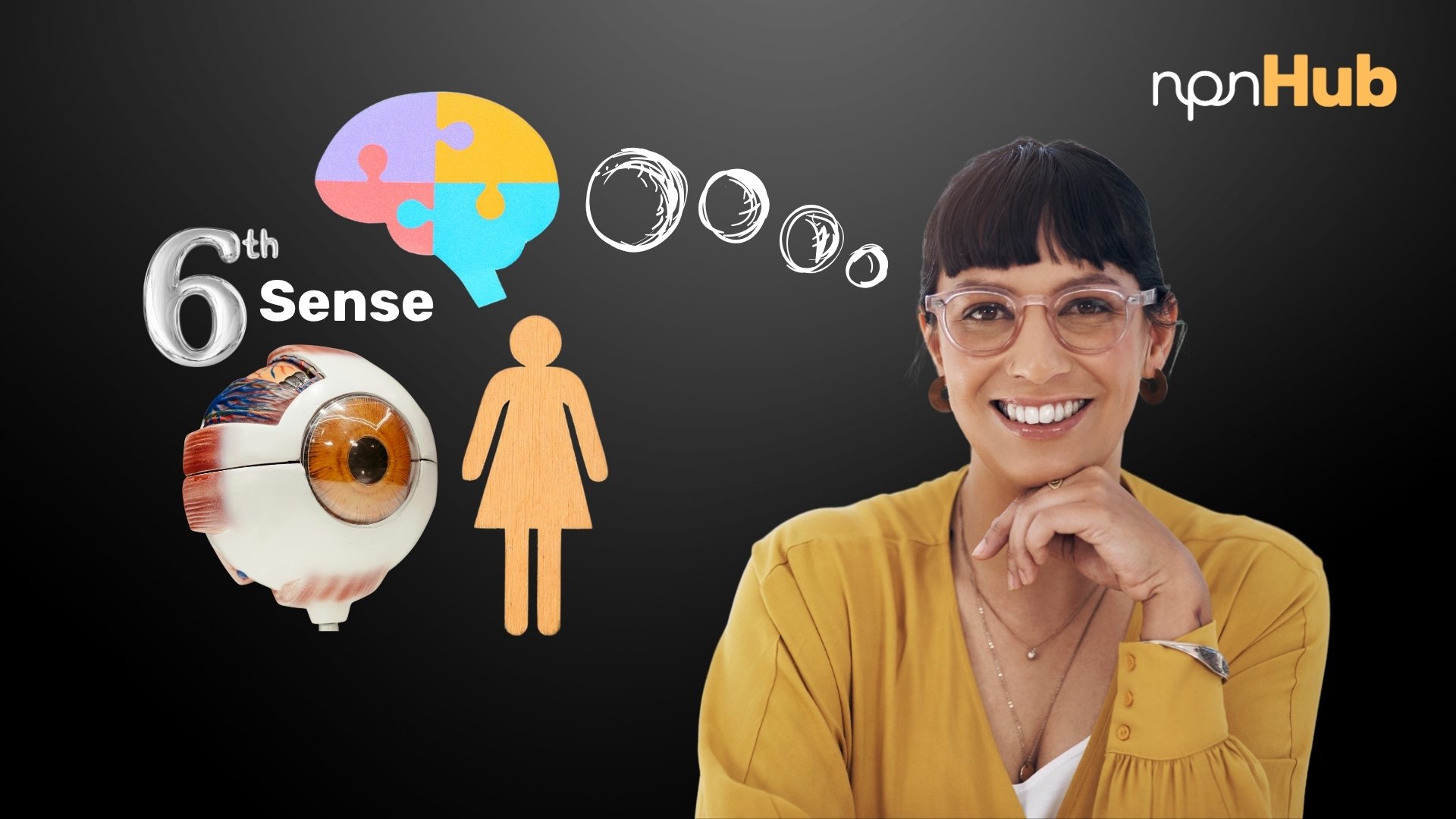The Neuroscience of Interoception and Expanding Human Awareness
npnHub Editorial Member: Greg Pitcher curated this blog
Key Points
- The “6th sense” refers to interoception – the brain’s ability to perceive internal bodily signals.
- Interoception involves brain regions like the insula, anterior cingulate cortex, and somatosensory cortex.
- Strengthening interoception improves emotional regulation, intuition, and decision-making.
- Research links interoceptive awareness to resilience against anxiety, stress, and burnout.
- Practitioners can teach clients evidence-based strategies to enhance interoceptive accuracy.
1. What is the 6th Sense?
A mindfulness coach asked her client to simply notice their heartbeat without touching their chest. At first, the client laughed—it seemed impossible. But after a few weeks of practice, they could detect subtle changes in their body that correlated with emotions and stress levels.
This story is illustrative, but it captures what neuroscience calls the 6th sense: interoception. Unlike vision, hearing, or touch, interoception is about perceiving internal states – heartbeat, breath, hunger, or even gut sensations.
Harvard neuroscientist Lisa Feldman Barrett describes interoception as the foundation of emotion, influencing how we experience the world (Barrett & Simmons, 2015, Nature Reviews Neuroscience).
So when we talk about “unlocking the 6th sense,” we’re really talking about cultivating a deeper awareness of the body’s signals – and training the brain to use them for better mental and emotional health.
2. The Neuroscience of the 6th Sense
Imagine a practitioner leading a breathwork session. As clients slow their breathing, some report feeling calmer, others feel more focused. These aren’t just subjective impressions – they reflect measurable changes in interoceptive brain circuits.
The insula is the key hub for interoception, integrating signals from the heart, lungs, and gut. The anterior cingulate cortex (ACC) processes these signals for emotional regulation, while the somatosensory cortex maps them into conscious awareness.
Studies using fMRI show that people with higher interoceptive awareness have stronger insula connectivity and better emotional regulation (Critchley et al., 2004).
In anxiety, interoceptive signals often get misinterpreted – like a racing heart being read as danger. But with training, clients can learn to interpret these signals accurately, rewiring the brain toward calm and resilience.
3. What Practitioners Should Know About Unlocking the 6th Sense
During a group coaching session, a practitioner asked: “How many of you notice your breath when you’re stressed?” Only a few hands went up. Most clients admitted they only noticed their body when something was wrong – pain, fatigue, or panic.
This highlights a critical point: many people live disconnected from interoceptive signals. For practitioners, three things matter:
- Interoception is the foundation of self-regulation. Clients who tune into body signals can prevent stress escalation.
- Myths persist – some believe intuition is “mystical,” but neuroscience shows it’s grounded in interoceptive processing.
- Training interoception builds resilience. Clients learn to decode signals before they become overwhelming symptoms.
Frequently asked practitioner questions:
- Can interoception really reduce anxiety and panic attacks?
- How do I help clients distinguish between intuition and worry?
- What are the best tools to strengthen interoceptive awareness?
Research from the University of Exeter confirms that interoceptive training reduces anxiety and improves decision-making accuracy (Garfinkel et al., 2015).
4. How the 6th Sense Affects Neuroplasticity
Every time clients practice tuning into their heartbeat or breath, they strengthen neural pathways between the insula, ACC, and prefrontal cortex. Over time, these pathways become more efficient, making body awareness automatic.
Interoceptive training also boosts neuroplasticity in emotion regulation networks, helping clients shift from reactive to reflective states. A study in Frontiers in Human Neuroscience showed that mindfulness meditation – an interoception-enhancing practice – increased gray matter density in the insula and prefrontal cortex (Lazar et al., 2005).
This means the 6th sense is not fixed. It can be strengthened like a muscle, reshaping the brain for resilience, intuition, and well-being.
5. Neuroscience-Backed Interventions to Unlock the 6th Sense
Why Behavioral Interventions Matter
Without guidance, clients may misinterpret interoceptive signals as threats, reinforcing anxiety loops. Practitioners can help reframe these signals, training the brain to interpret them as useful information.
1. Heartbeat Awareness Training
Concept: Monitoring heartbeat accuracy enhances insula activity and emotional regulation (Critchley et al., 2004).
Example: A practitioner guides a client through exercises counting heartbeats without touch, comparing estimates to actual pulse checks.
✅ Intervention:
- Start with 1–2 minutes of silent heartbeat focus.
- Compare perceived beats with measured pulse.
- Track improvement over weeks.
2. Breathwork for Interoceptive Clarity
Concept: Slow, focused breathing regulates vagal tone and ACC activity (Zaccaro et al., 2018).
Example: A coach leads clients through box breathing to anchor awareness in the body.
✅ Intervention:
- Practice 4–4–4–4 box breathing daily.
- Pair breath awareness with journaling body sensations.
- Use breath as a grounding cue in stressful situations.
3. Body Scan Meditation
Concept: Systematic body awareness increases interoceptive accuracy and reduces stress (Farb et al., 2013).
Example: A practitioner leads clients through scanning sensations from toes to head, noting tension or flow.
✅ Intervention:
- Guide 10-minute daily body scans.
- Encourage labeling sensations neutrally (“warmth,” “tightness”).
- Reflect on patterns between sensations and emotions.
4. Somatic Journaling
Concept: Writing about body sensations consolidates interoceptive awareness in memory circuits 9 (Source).
Example: A therapist asks clients to record daily body signals linked to emotions, creating a “body-emotion dictionary.”
✅ Intervention:
- Provide prompts: “Where do I feel stress?”
- Encourage linking sensations with context.
- Review entries weekly to identify trends.
6. Key Takeaways
Unlocking the 6th sense isn’t mystical – it’s neuroscience. Interoception is the bridge between body and mind, giving clients tools to regulate emotions, sharpen intuition, and achieve resilience.
🔹 Interoception is the brain’s 6th sense – our awareness of inner signals.
🔹 Training interoception reshapes neural pathways for calm and clarity.
🔹 Practitioners can use heartbeat training, breathwork, body scans, and journaling to build this capacity.
🔹 Clients who enhance their 6th sense gain better self-trust, emotional balance, and decision-making.
7. References
- Barrett, L. F., & Simmons, W. K. (2015). Interoceptive predictions in the brain. Nature Reviews Neuroscience, 16(7), 419–429.https://www.nature.com/articles/nrn3950
- Critchley, H. D., et al. (2004). Neural systems supporting interoceptive awareness. Journal of Neuroscience, 24(18), 4662–4672.https://pubmed.ncbi.nlm.nih.gov/14730305/
- Garfinkel, S. N., et al. (2015). Interoceptive training to improve anxiety regulation. Trends in Cognitive Sciences, 19(10), 547–559.https://pubmed.ncbi.nlm.nih.gov/25451381/
- Lazar, S. W., et al. (2005). Meditation experience is associated with increased cortical thickness. NeuroReport, 16(17), 1893–1897.https://pmc.ncbi.nlm.nih.gov/articles/PMC1361002/
- Zaccaro, A., et al. (2018). How breath-control can change your life. Frontiers in Human Neuroscience.https://www.frontiersin.org/journals/human-neuroscience/articles/10.3389/fnhum.2018.00353/full
- Farb, N. A., et al. (2013). Interoception, meditation, and mental health. Frontiers in Human Neuroscience.https://www.frontiersin.org/journals/psychology/articles/10.3389/fpsyg.2015.00763/full















